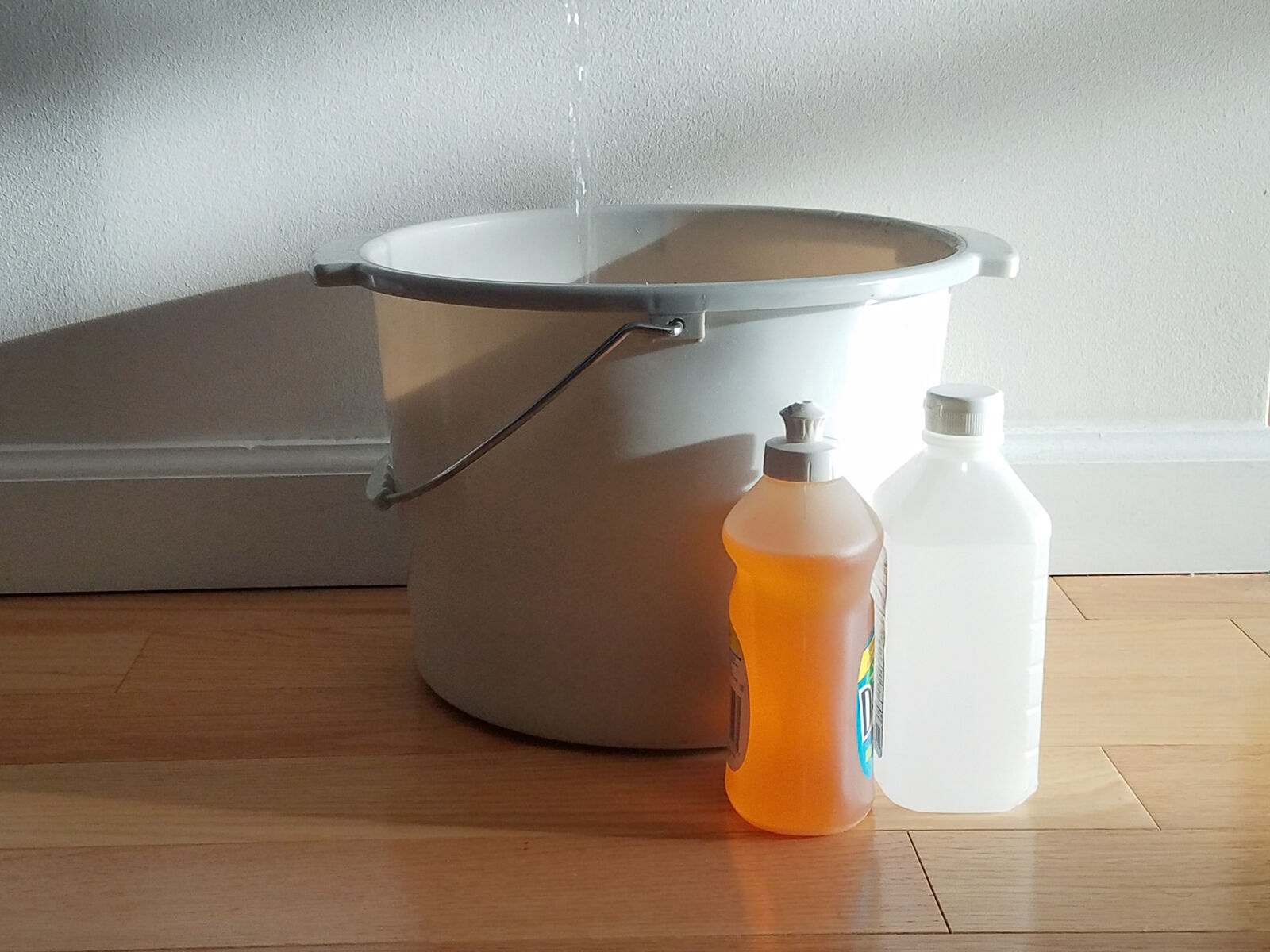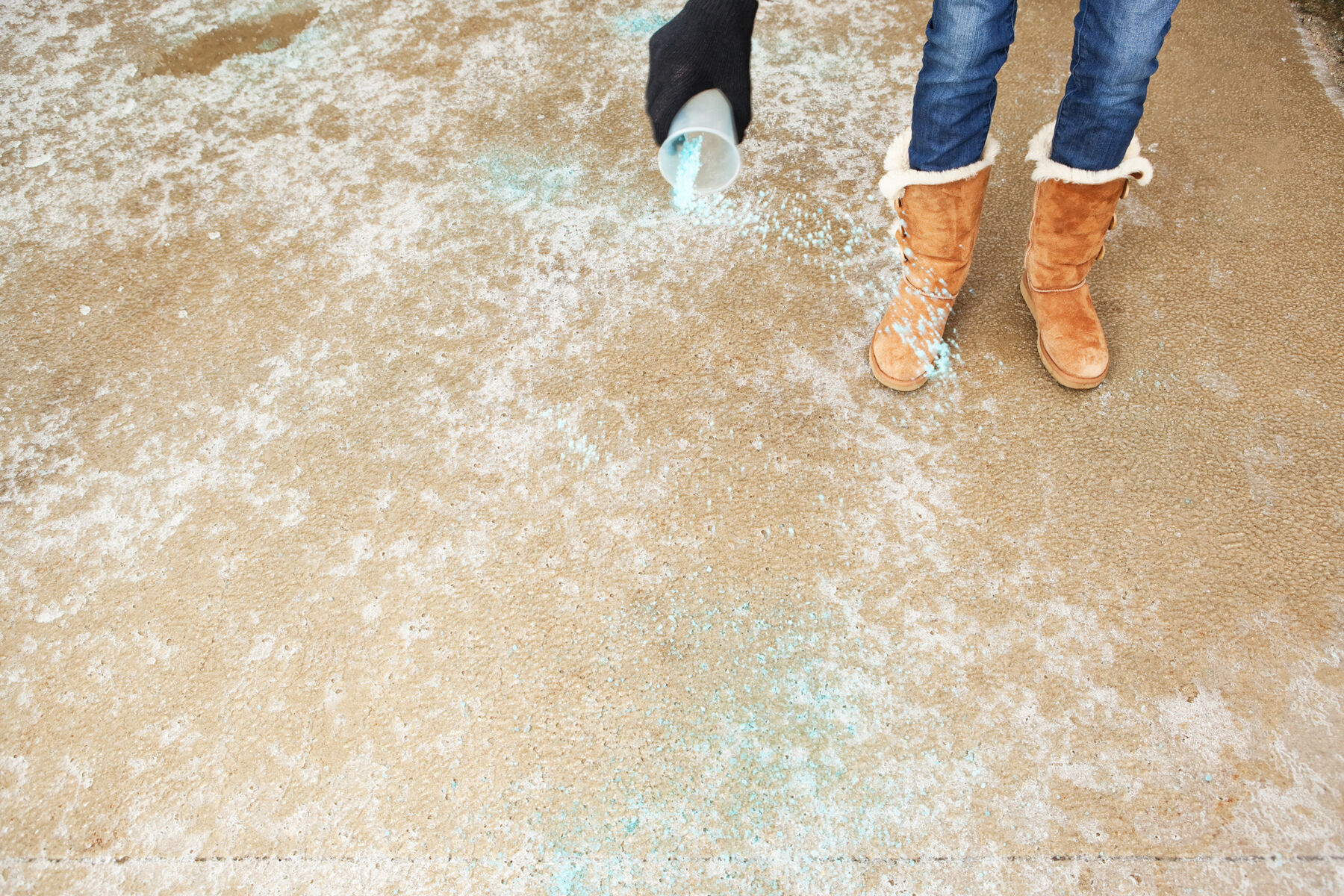Non-Salt Awesome Sauce Alternatives for De-icing Your Driveway

As we approach the dead-of-winter months, we see the hardware stores and home-improvement center stocking displays of products for deicing windshields and walkways. And rightfully so: Safety is always a priority when it comes to your household, especially when snow and ice are in the mix.
Related: How to Prepare for a Snowstorm
Rock salt and kitty litter are among the traditional remedies for deicing your home's outdoor pathways — but "traditional" and "most effective" aren't necessary synonymous. Instead, consider some alternative methods for melting ice quickly on your sidewalks and driveways this winter.
Why Does Salt Melt Ice?
Now, salt certainly has its ice-melting merits. The temperature that ice melts back into water is 32-degrees Fahrenheit (0-degrees Celsius). Without giving you flashbacks to your high-school chemistry class, sodium chloride, commonly known as salt, lowers the freezing point of water. Ice in contact with salt melts, dissolving the salt and forming a brine solution. The solution begins to lower the freezing point of the ice as it spreads. And voila!: melting, brittle, easy-to-break-up ice.
However, our days sprinkling handfuls of rock salt and kitty litter are history. Working smarter is more comfortable and less-labor-intensive for you. Table salt and kitty litter require cleanup work after the thaw and over time have proven to be hard on concrete and surrounding vegetation.

What Should I Use for Deicing?
Today, deicing is done with a mixture of ingredients in water and other liquids to cover the greatest surface area possible with less product. All of the recommended chemicals work the same way as salt, but they have a greater range of temperatures, last longer on wet surfaces to prevent re-icing, or provide other benefits. Common deicing mixtures used by municipalities are:
- Calcium chloride
- Sodium chloride (table salt)
- Magnesium chloride
- Potassium chloride
- Calcium magnesium acetate
Pay attention to where your city, county or state workers apply these deicers. You'll see these used at intersections, on-ramps and exit ramps, overpasses and bridges, and parking lots — generally heavy vehicle-traffic areas without vegetation or pet traffic. If you take note of the chemicals in the deicers available at the hardware store, you'll find that many consumer deicers are the same chemicals used in bulk by your government road crews.
The walkways, stairs and driveways of your home are different. Your paved areas are surrounded by lawns and flowerbeds, and used by pets. Vegetation is adversely affected by these caustic deicing solutions, which should be used sparingly with long-term effects in mind. You've likely seen what these chemicals do to the metal on cars and trucks — so think of what they can do to your lawn and pets. And you sure don't want these substances being tracked into your home from outside.
Natural pet-friendly products like fine gravel, sand and sawdust are often applied where it can be in direct contact with ice for traction. These substances provide a limited increase in friction when weight is applied, but offer no melting properties. They make a lot of mess and require cleaning up after the thaw.
More Related Articles:
- Frozen Gutters be Dammed! 6 Ways to Eliminate Ice Dams
- Dreaming of a Heated Driveway? Here's What You Need to Know Before Installing One
A Better Deicing Solution ... Literally
If the old-school method is the school you attend, we have some best practices you can use to get more with less. Mixing up your own brine or solution, in a large bucket and then spraying it over the surface of the ice will allow you to use less of the harmful stuff and cover more surface area. Benefits include being able to prepare and store the solution ahead of time as well as have enough left over for reapplication as necessary.
Here's what you'll need:
- A big bucket
- Half-gallon of hot water
- Six drops dish soap
- A quarter-cup of rubbing alcohol
How Does This Stuff Work?
Mix it up, and apply it to your walkways and driveways as needed. This solution works great in garden sprayers and spray bottles as well. The alcohol works to lower the freezing point of the ice while the soap acts to break the surface tension at the molecular level, helping the solution spread more easily and cover a larger surface area.
Bubbles are always fun — and when you apply this solution to snow and ice, you'll see it bubbling as it works its magic. Most of the snow and ice will liquify and any chunks left behind can be easily shoved aside.
The benefits of this solution are many:
- It's cheap and homemade.
- The active ingredient evaporates after use.
- The main ingredient is water, making it pet- and eco-friendly.
- Cleanup after the thaw can be done with a garden hose — just a simple rinse and you're done.
Since we're all home now more than ever, being prepared for unexpected home repairs with a plan from HomeServe is important. Having a plan in place gives you the peace of mind knowing that you can simply call our 24/7 repair hotline for covered breakdowns. See what plans are available in your neighborhood.


